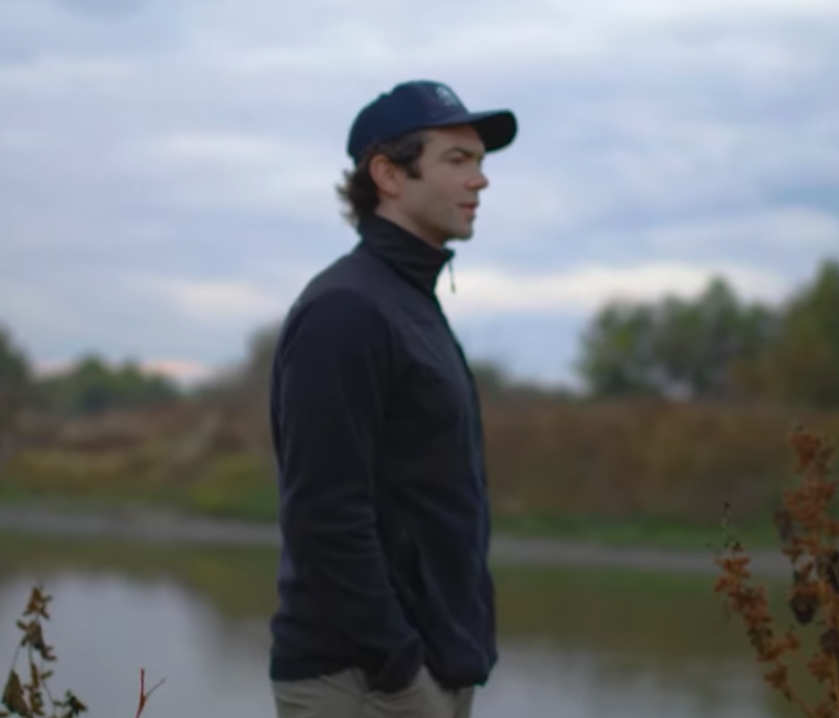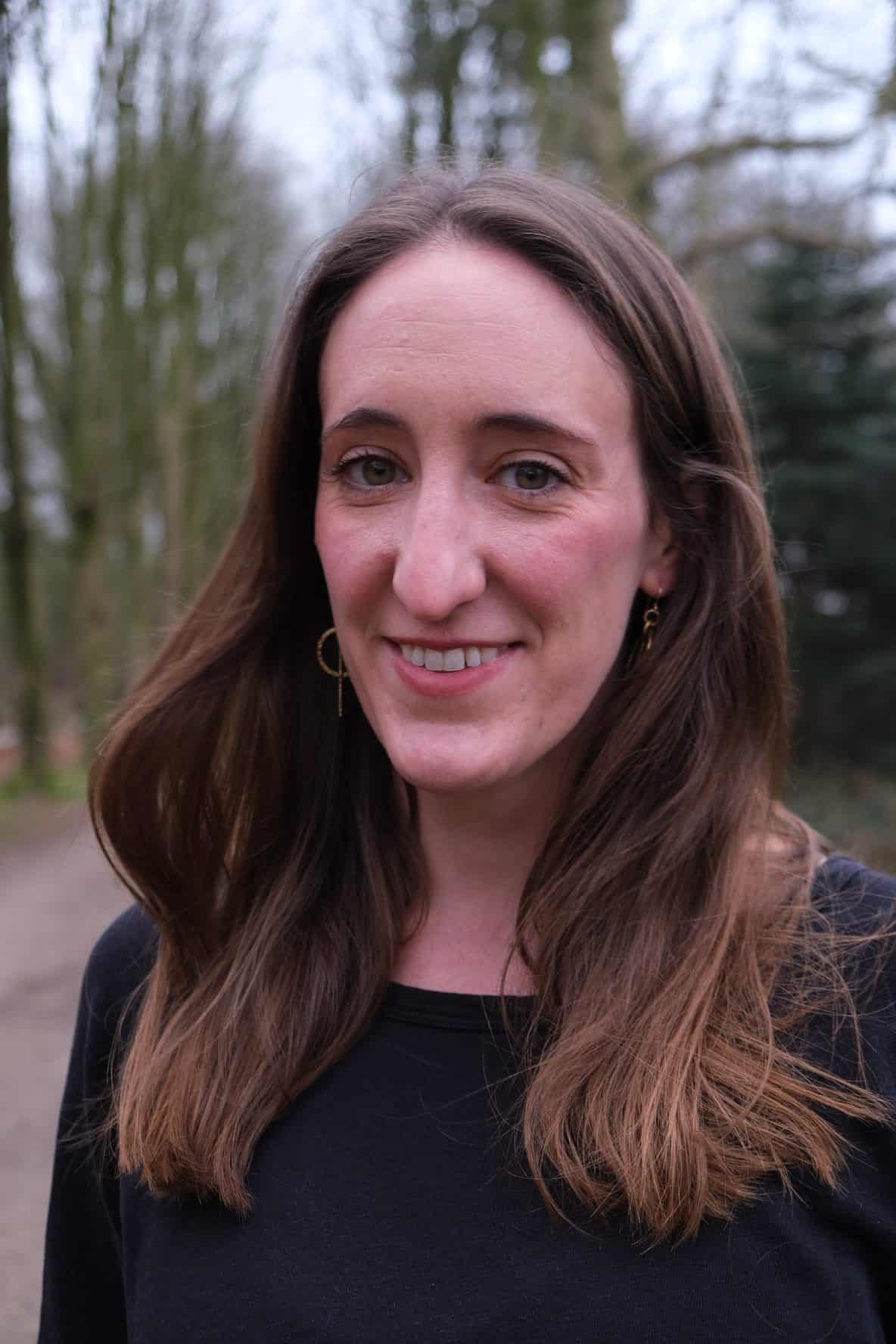

Waterline is an ongoing series that explores the solutions making rivers, waterways and ocean food chains healthier. It is funded by a grant from the Walton Family Foundation.
On a bright morning in early January near the confluence of the San Joaquin and Tuolumne rivers in Central California, John Cain looks out over a small, curved lake. The trees are mostly bare for winter, but Cain, senior director of conservation of the nonprofit organization River Partners, points out that the wild landscape in front of him is buzzing. Bright white egrets swoop lazily down into the water while terns whiz by in the air. A California rose bush clings onto bright red rose hips. The low-lying plain across the water is dense with gray branches of adolescent trees.
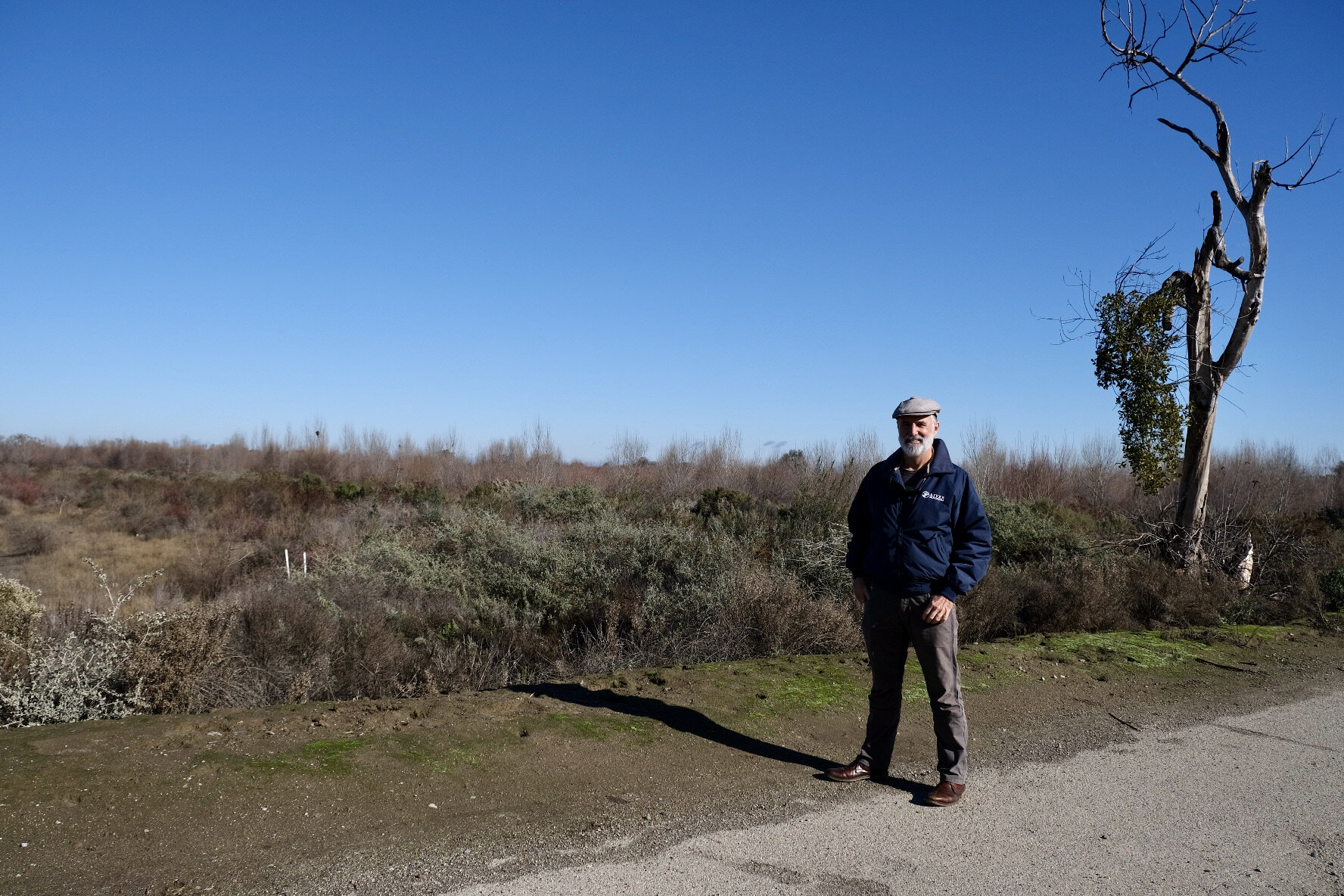
For more than four months last year, as California was inundated with a series of major storms, this part of Dos Rios Ranch Preserve, about 20 miles west of Modesto, was submerged under water. That’s exactly what it was designed for. And when the floodwaters recede, Cain says, “It’s just an explosion of life out here.”
Until a little more than a decade ago, this area was productive farmland, used for growing crops like tomatoes, alfalfa, melons and almonds. Now it’s set to be California’s next state park after a restoration project spearheaded by River Partners converted the ranch into rewilded riverside habitat. As climate change has doubled the likelihood of flooding in California, and is projected to increase runoff from storms by as much as 200 to 400 percent, this restored floodplain is proving to be a promising approach.
California’s Central Valley doesn’t get much rain, but the 400-mile-long region is naturally shaped by water. Before human intervention, rivers fluctuated with flow from the towering Sierra Nevada range to the east. But over the last century and a half, rivers have been tamed by dams and constricted by levees as land was converted for agriculture and urban development. Some 95 percent of the region’s native riparian and wetland habitat has been lost.
Even as rivers have been engineered with the aim of reducing flooding, communities and farmland have remained vulnerable. Bill Lyons, whose family owned Dos Rios Ranch for about 25 years, says that it was good farmland. But he recalls three times when the ranch was impacted by major flooding, resulting in loss of crops, erosion damage, and debris scattered across farmland.
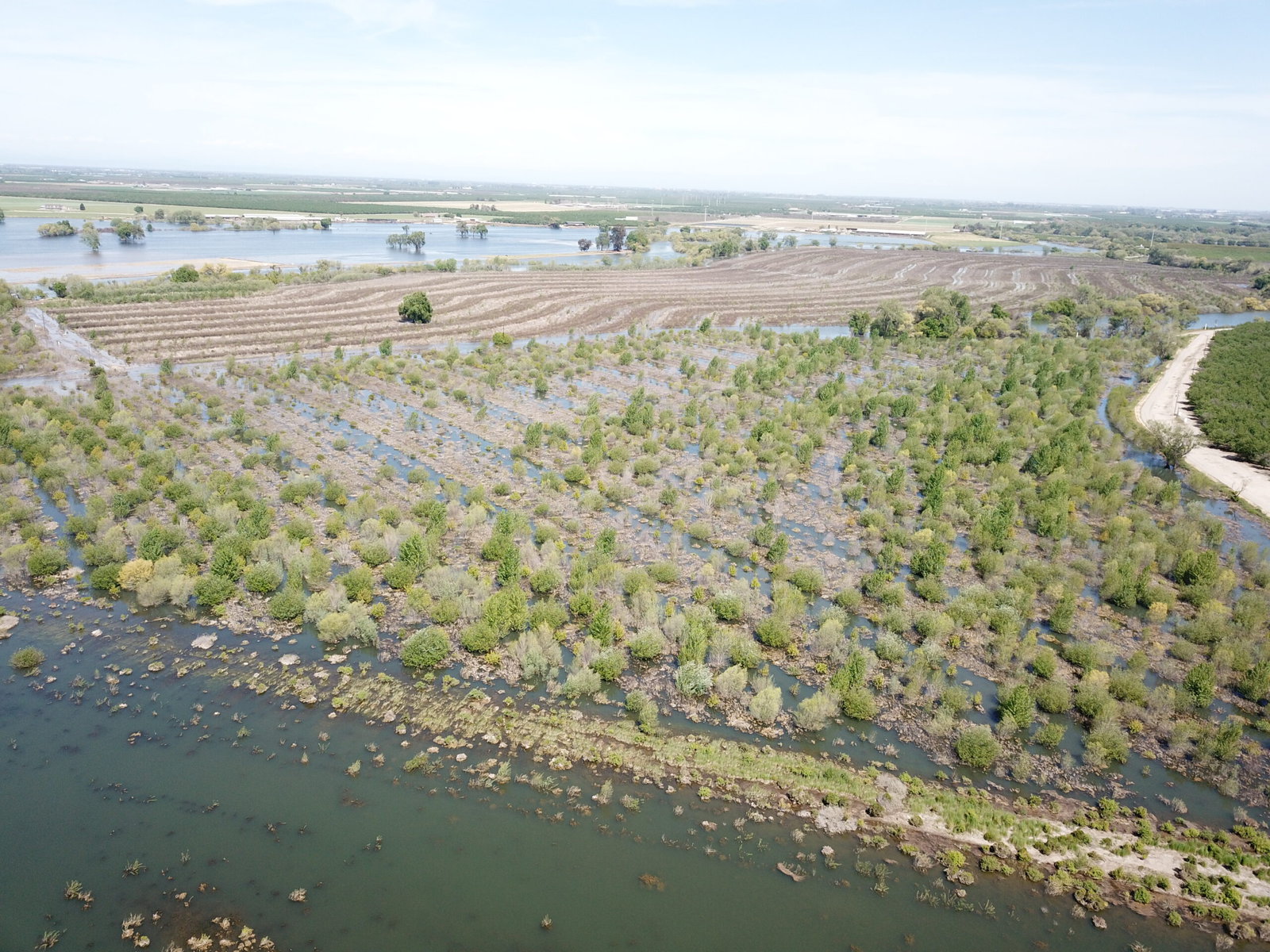
Lyons’ family — which has been farming for four generations and has a century of history in this region — has long been committed to stewardship of the land. They are concerned with supporting the health of the environment, he says. So the family was interested when River Partners approached them about buying Dos Rios Ranch.
“We looked at it from a point of view that probably its highest and best use would be to be returned to a natural state,” Lyons says.
Weighed down by negative news?
Our smart, bright, weekly newsletter is the uplift you’ve been looking for.In 2012, River Partners purchased the property and began restoration work along eight miles of river. Berms that had been built to protect farmland from high water were removed. To date, more than 350,000 trees and shrubs have been planted. River Partners uses existing irrigation infrastructure on former farmland to help young vegetation endure hot dry summers as it gets established. About 1,600 acres have been rewilded so far, and restoration work is ongoing on another 500 acres on an adjacent former farm.
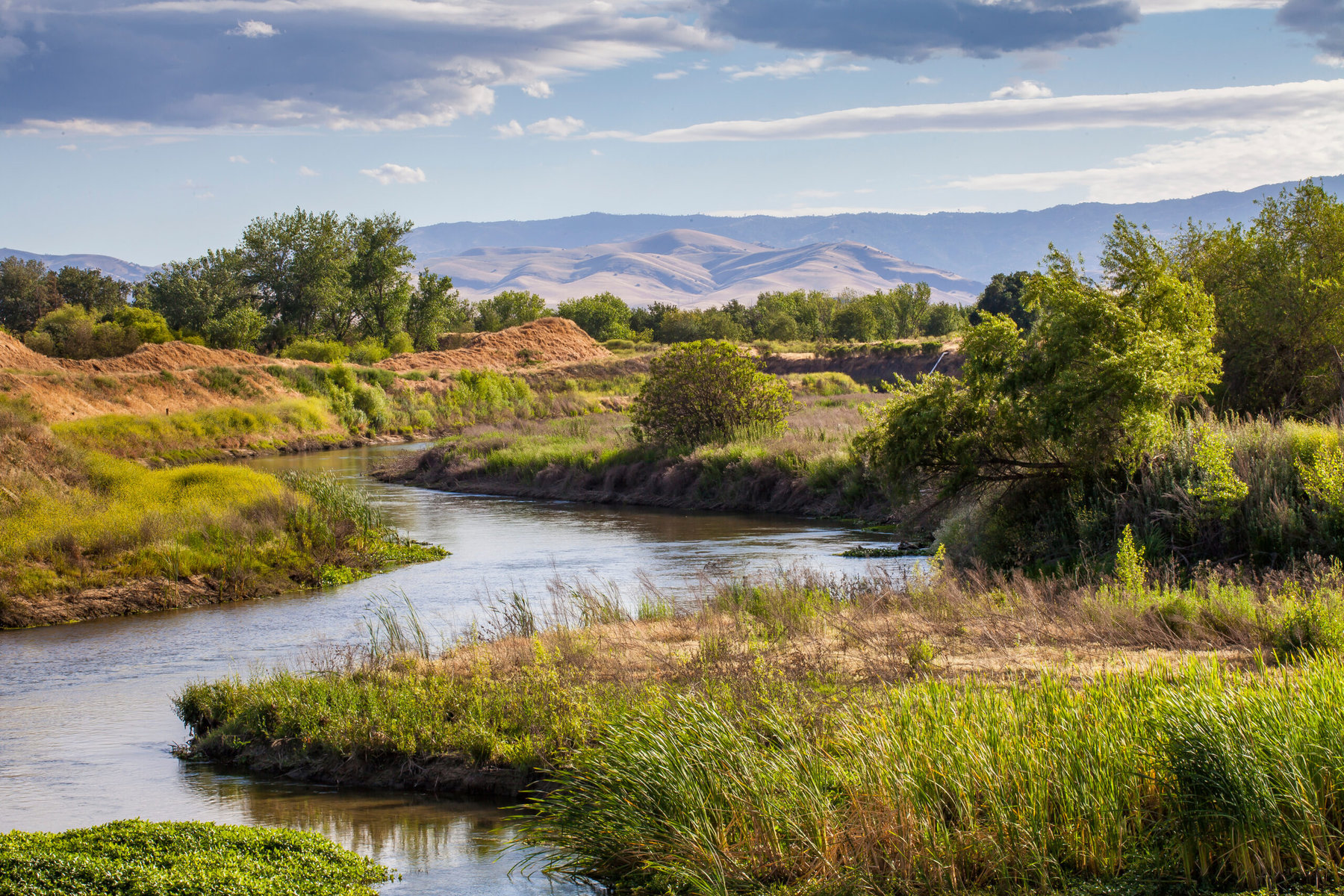
Pausing on a rough single-track road that runs atop higher ground through the preserve, Cain points out a long, shrubbery-covered berm that gently slopes down to the floodplain about three yards below the road. It’s a ramp designed for riparian brush rabbits, an endangered species that has moved in to Dos Rios. The slope allows them to escape to higher ground when the area floods. To the right of the ramp, birds flit between bare branches of densely planted trees. To the left, a low-lying grassy meadow is primed to take on high water. When the San Joaquin River overflows onto the field, it offers an abundant feast of zooplankton and tiny bugs for juvenile salmon, which studies show grow faster on floodplains than in the river. Instead of aiming to benefit any single species, the restoration was geared towards creating a varied ecosystem.
Over the last decade, the restored floodplain quickly showed signs of success in supporting wildlife. And in 2023, the area got a chance to show how it performed in heavy flooding.
Lilia Lomeli-Gil walks by piles of branches and brush a few feet away from the backyard fences of houses on the edge of the small town of Grayson, across the river from Dos Rios Ranch Preserve. The debris was left by high water last winter, she explains, as the river overflowed near this small community, home to many farmworkers.
The record-breaking precipitation that hit California last year was devastating for some communities. Thousands of people were evacuated when a levee broke along the Pajaro River, 50 miles southwest of Grayson.
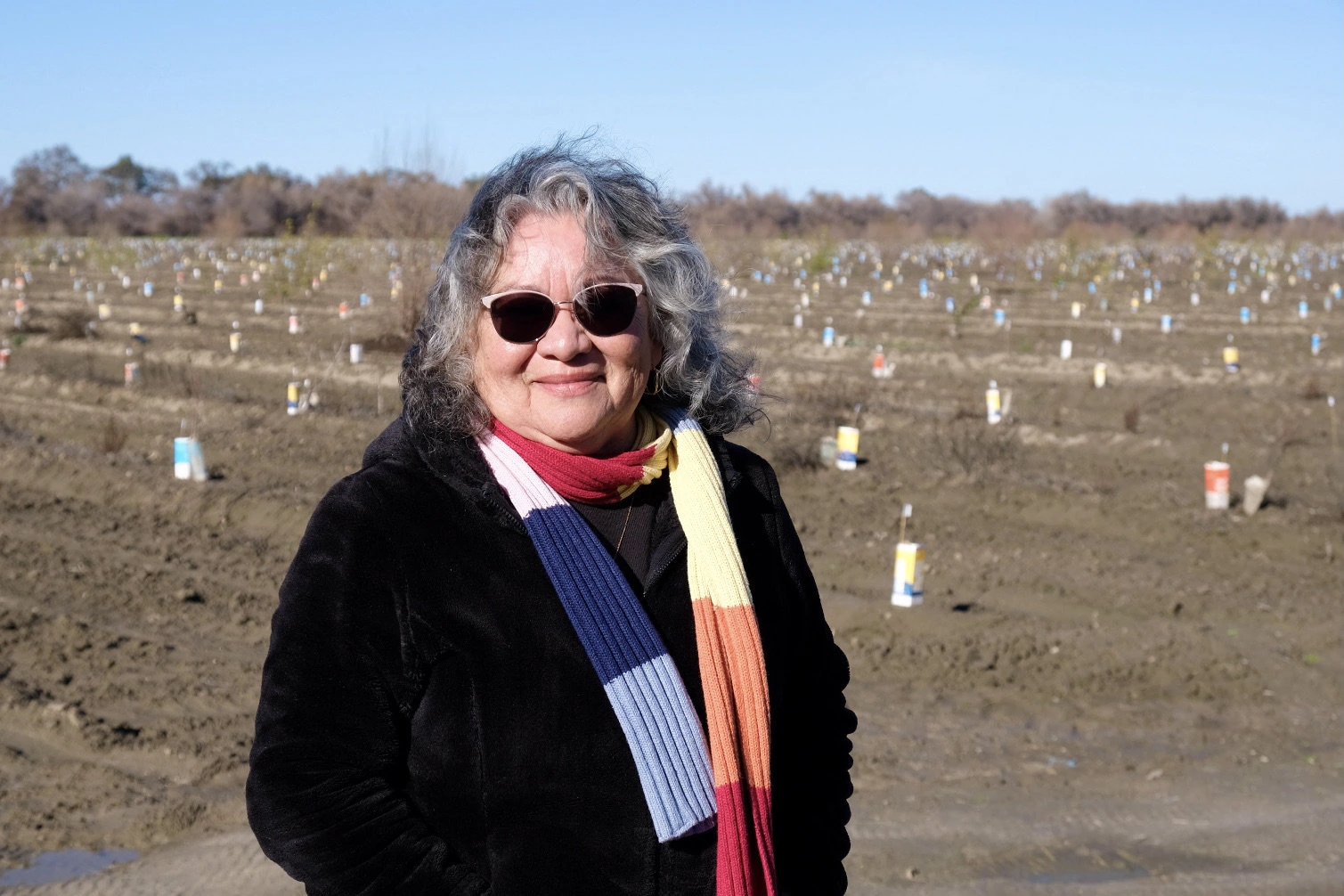
In Grayson, residents watched the rising river warily. A few families evacuated out of precaution, according to Lomeli-Gil, co-founder of the Grayson United Community Center. The water came up within a couple feet of several houses, she says, but the town didn’t sustain major damage. She attributes that to the floodplain restoration work.
“I can only imagine if … River Partners had not opened up the levees,” she says. She believes giving the water room to spread out helped the town avoid flood damage. “I think that made a difference.”
Across the Central Valley, similar projects are in development, he says. Cost is a limitation — the board’s recommended flood protection measures, including projects like Dos Rios, have an estimated price tag of $25 to $30 billion. But those measures could avoid around $1 trillion damage from major flooding. The permitting process can also be slow and a hurdle. But Johnson says there’s a lot of opportunity to develop similar floodplain habitat restoration projects across the valley.
“In order for it to work at a system-wide scale, we want to be doing it in a bunch of different places,” Johnson says.
Floodplain restoration can also help California weather drought, which is predicted to become more intense with climate change, according to Cain. Not only does growing native vegetation require less water than agriculture, when floodwaters spread across the land, the water seeps down into the groundwater, recharging overdrawn aquifers.
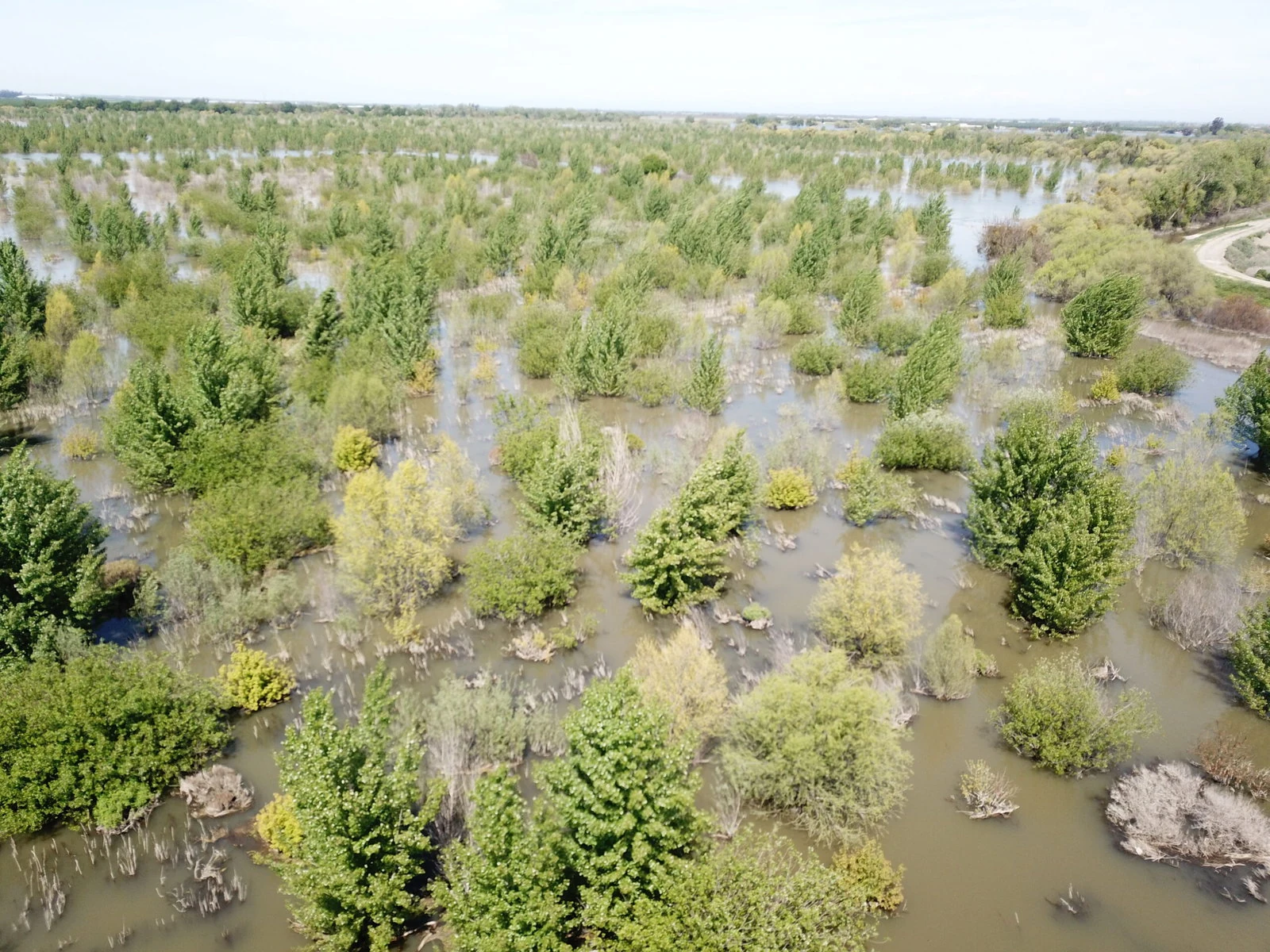
For all its benefits, this type of floodplain restoration isn’t appropriate everywhere, according to Joshua Viers, a watershed expert at University of California, Merced. Dos Rios is well-suited because the confluence of the two rivers makes for dynamic conditions that are particularly good for habitat restoration. In other parts of this heavily agricultural region, other approaches may be more appropriate, he says. Certain crops, like grape vines, can handle some flooding, which also benefits groundwater stores. Some types of farming can be incorporated into habitat restoration; rice fields can support salmon. According to Viers, using a range of different approaches can help manage flooding and support ecosystems along California rivers.
“You can’t do all things in all places,” Viers says. “If you can string these together, you can have mutually reinforcing benefits.”
There are also social benefits to habitat restoration: Through the Grayson United Community Center, Lomeli-Gil has been working to engage Grayson residents with Dos Rios and surrounding restored natural areas. Several locals have gotten jobs with River Partners planting vegetation. And now, California State Parks is aiming to open the new state park to the public later this year.
“It’s in our backyard, so how blessed will we be,” Lomeli-Gil says.
As other floodplain projects are in development across California, Dos Rios is still expanding.
Cain walks along furrows on a plowed field on former farmland adjacent to Dos Rios. Instead of crops, this plot will soon be planted with young native trees and shrubs. Cain checks little white labels on sticks that mark where each new plant will go: a Modesto ash, box elder, and, his favorite, elderberry.
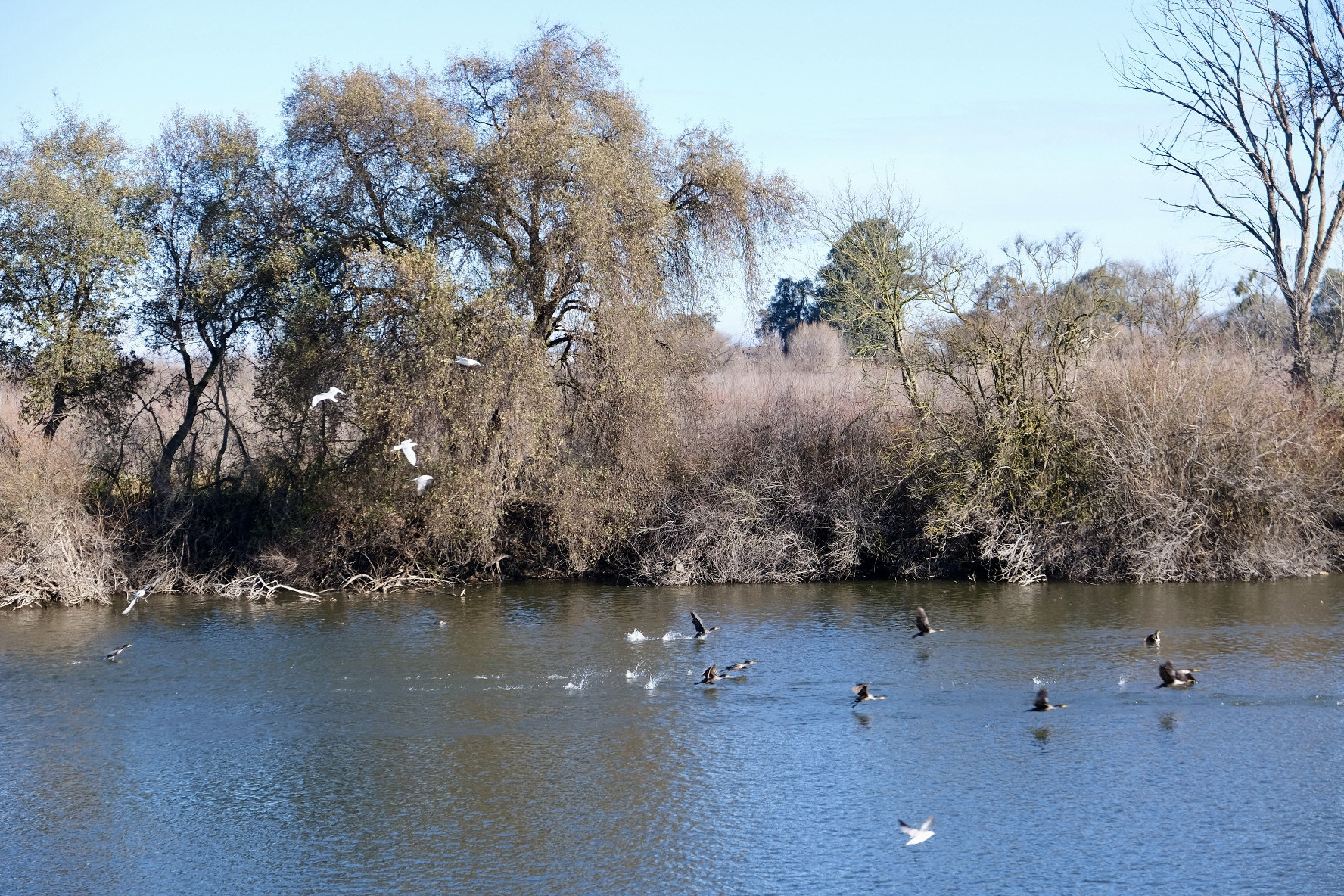
Cain and his colleagues at River Partners have set a long-term goal of restoring 100,000 acres in the San Joaquin Valley. That would restore about 10 percent of the wetlands that used to be in this area.
On the other side of the bare field, two large wonky Vs of Aleutian cackling geese fly by. Even though they are hard to see from such a distance, their characteristic honks echo across the field.
Dos Rios flooding images and videos are courtesy of River Partners.


